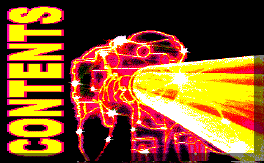 |
Television Production by Ron Whittaker, Ph.D. Also available at CyberCollege.com |
| |
Notes for Students and Instructors | |
 |
Television Production by Ron Whittaker, Ph.D. Also available at CyberCollege.com |
| |
Notes for Students and Instructors | |
I. Things You Need to Know First |
II. Video Cameras |
A. Lenses--the Focus of Creative Control
B.Principles of Color and Video Quality
C.Video Cameras and Their Operation
You're Saying |
III. Composition and Computer Graphics |
The following chapters have many color illustrations. Expect longer download times.
IV. Lighting |
The following chapters have many color illustrations. Expect longer download times.
V. Audio |
VI. Video Recording |
VII. Editing |
VIII. Producing and Directing |
IX. News and Documentary Production |
Production - Part I | Production - Part II |
X. Legal and Ethical Issues |
XI. Non-Broadcast Production and Careers |
![]() 68. Non-Broadcast Television
68. Non-Broadcast Television ![]() 69. Careers
69. Careers ![]() 70. A Final Word
70. A Final Word
Television Production Resources on the Internet Another TV Production Cybertext
Return to the top of the this Index Return to Home Page Index
© 1996 -1998, R. Whittaker
